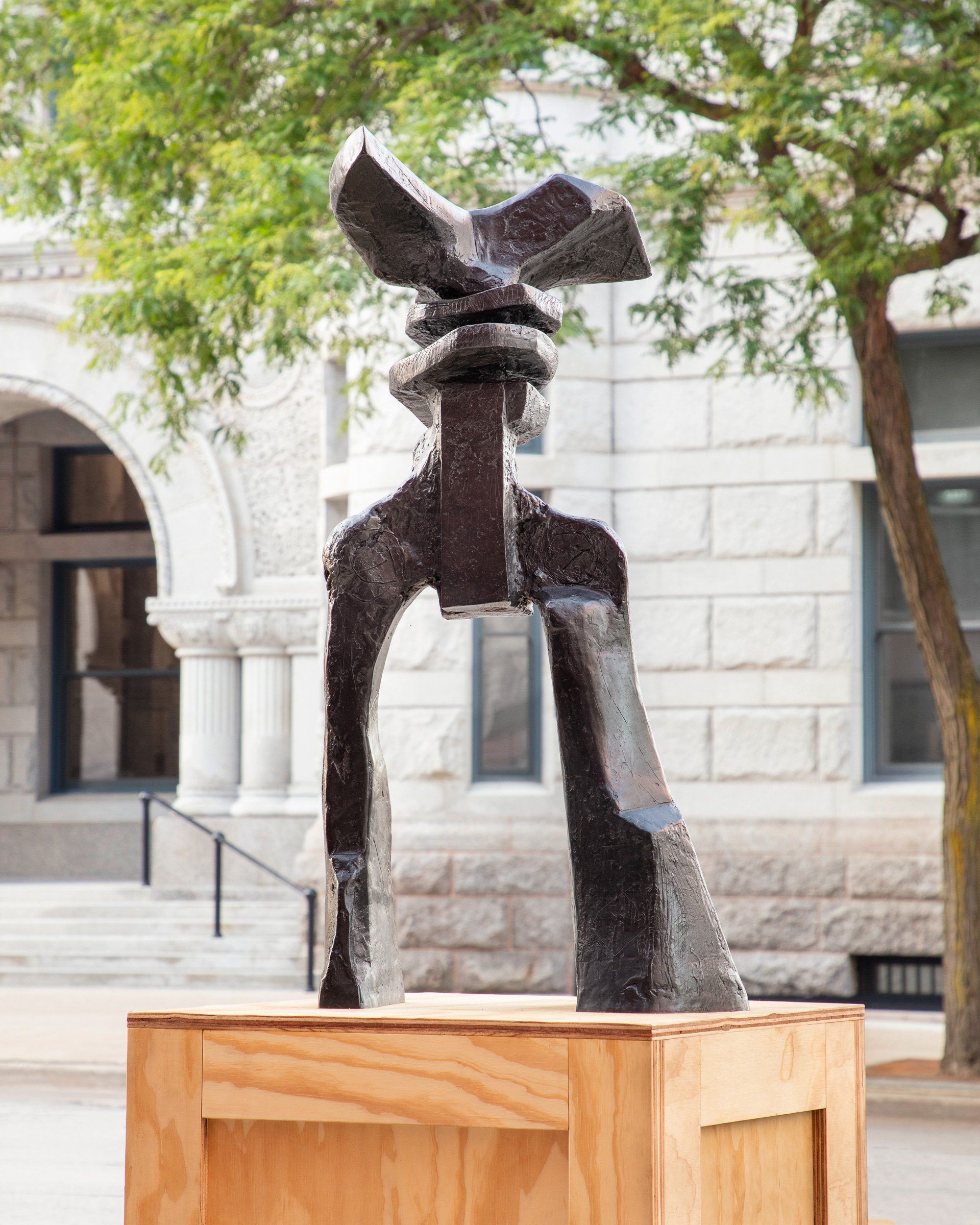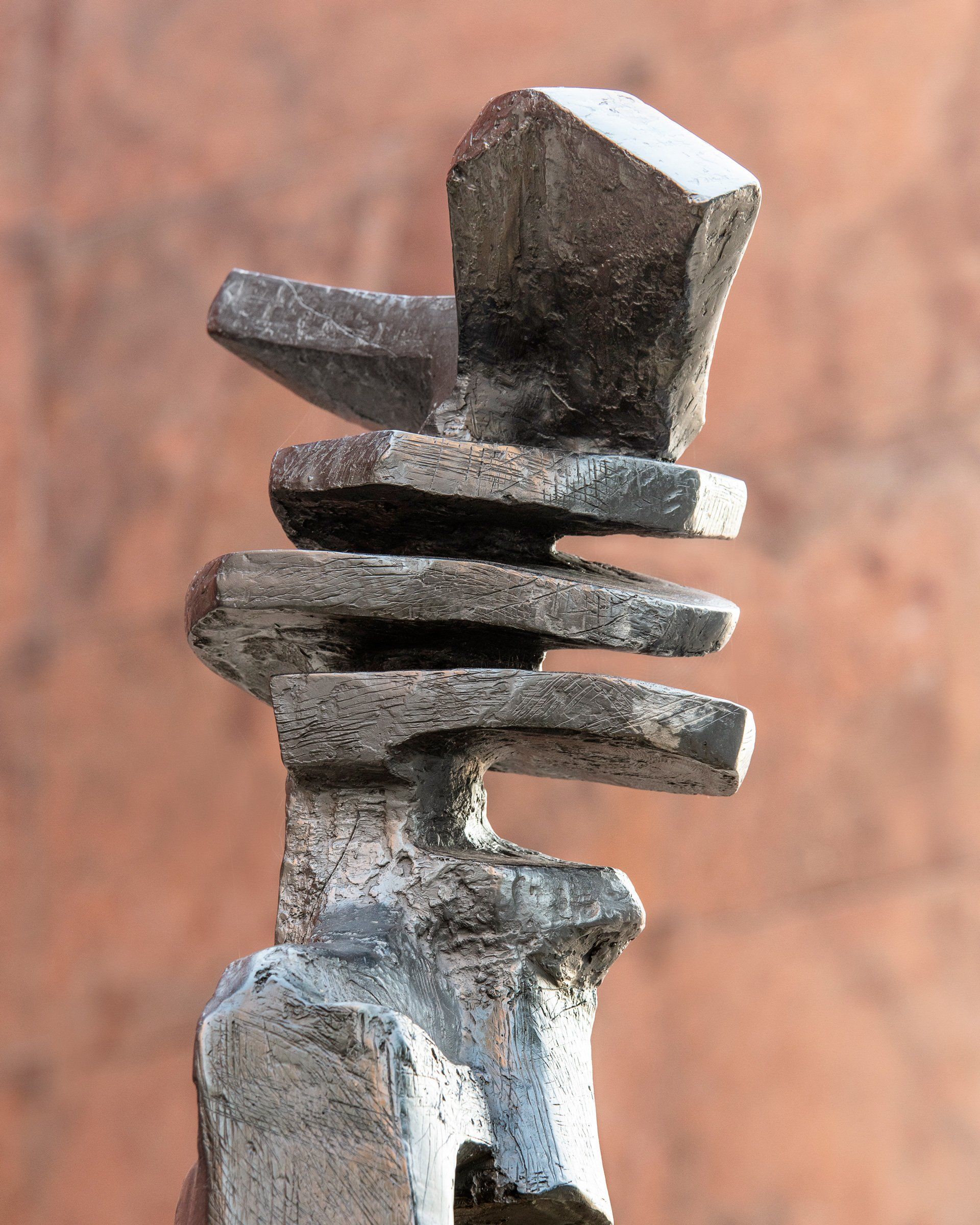2020 Exhibition
William Kentridge | Open | 2018

Slide title
Write your caption hereButton
Slide title
Write your caption hereButton
Photo by: Kevin J. Miyazaki / Sculpture Milwaukee
William Kentridge | Open | 2018
bronze, ed. 2/3 / 1 AP | 42 ½ x 21 ¼ x 13 inches
Courtesy the artist and Marian Goodman Gallery, New York
William Kentridge, born in 1955 into apartheid-era South Africa, was one of the first major visual South African contemporary artists to bring his politically active art work to the wider world while global boycotts worked to dismantle apartheid.1 Kentridge’s family were Lithuanian Jews who fled to Johannesburg via Europe during a 19th century Russian pogrom. His family was very involved in the politics of the country, from his grandfather’s role in parliament to his lawyer father’s fight, with “incandescent rage,” at the depredations of apartheid, which officially ended in 1994.
Kentridge explores the “instability of knowledge in the world, its provisionality.” He comments on this through the instability of his objects that morph or disappear as a metaphor for the events and experiences of our daily lives. By staging illogical events with often illogical figures, Kentridge questions the solidity of text and of images. We understand Kentridge’s goal: to up-end our understanding of reality and to question our assumptions about the world.
Kentridge is interested in the comedy and tragedy of history, and how the “…universality of laughter rather than the particularity of tears is a better way of approaching…huge social shifts and changes.”2
Kentridge is one of the most stirring and incisive artists of his time, combining artistic forms drawn from Surrealism and Dada, a deep meditation on the history of art in the early Soviet era to the stories, legacy, and ancient narratives of Africa and other parts of the world. He drew as a child, and after moving about in the theater and film worlds, he went back to his original love of drawing. The artist has experimented across forms, from flip books and stop animation to live performance, operas, drawings, sculpture, and shadow plays. He creates an enveloping world of forms and characters that are haunting, mournful, and hopeful as they look towards their common humanity.
Kentridge’s lexicon of “props” appear across his various art forms, drawn from the ancient and modern worlds, from art history, and from his own encyclopedic concordance of images drawn from his films. Recurrent images include the carrier pigeon, a pre-radar listening device, a gas mask, a war horse, and a tank to a cat, reclining nude, flowers, a fan, and German artist Albrecht Durer’s rhinoceros. Kentridge manipulates his figures like chess pieces, each move impacting how we read the next, each outcome in the game of unique.
Lexicon Medium Bronze (Open), 2019, is from a recent exhibition in New York that was based on the forms and figures from three performances from the past two years.3 Lexicon Medium Bronze (Open), is drawn from the “corkscrew” figure Open. The headless, sci fi figure tilts upwards, as if proud of its place in the world, never mind missing head and arms. Like most of his figures created for his artistic forms, Kentridge uses found objects immediately at hand, allowing for an improvisational yet recognizable object that has vaguely human attributes.
This skeletal figure may suggest humanity hollowed out by the depredations of persistent social and political denigration. As a white man Kentridge sees this devastation. He critiques the mechanisms of power in order to inspire his viewers to dismantle them or contest them in whatever ways they can.
Jefferson and Wisconsin Ave. - Flowerbed




